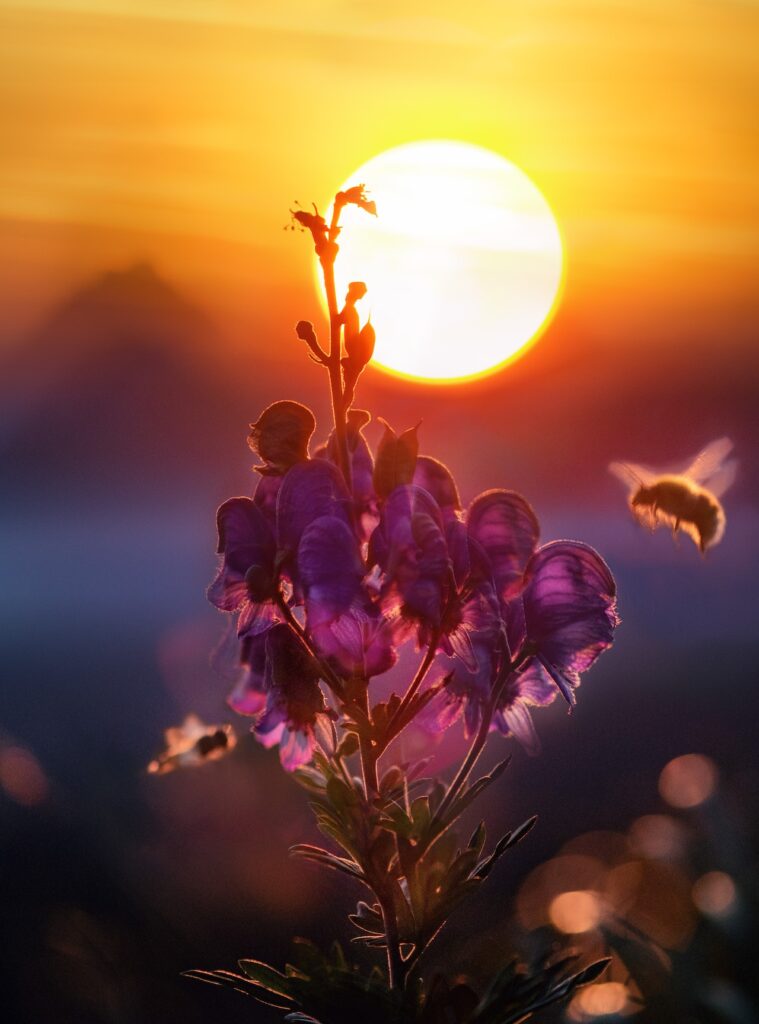
Pollinators play a vital role in our ecosystem, from bees and butterflies to hummingbirds, facilitating the reproduction of plants by transferring pollen between flowers. Whether you’re an experienced gardener or just starting your green journey, creating a pollinator-friendly garden not only ensures the health and abundance of your plants but also contributes to the well-being of these essential creatures. In this article, we’ll explore ten effective strategies that will transform your garden into a vibrant oasis for pollinators, offering them the nectar, shelter, and resources they need to thrive.
Plant a Variety of Flowers:
A diverse selection of flowers ensures that your garden is a year-round buffet for pollinators. By choosing different species that bloom at various times, you provide a consistent source of nectar and pollen. This ensures that bees, butterflies, and other pollinators always have access to the resources they need, whether it’s spring, summer, or fall.
Native Plants:
Native plants are a cornerstone of any pollinator-friendly garden. These plants have evolved alongside local pollinators, so they are perfectly suited to their needs. By incorporating native species into your garden, you create a haven for local bees, butterflies, and other pollinators, supporting the ecosystem and fostering biodiversity.
Create a Water Source:
Pollinators need water, not just for drinking but also for maintaining humidity in their hives and nests. A simple birdbath or a small pond in your garden can provide an essential water source. Be sure to add some stones or floating objects to allow insects to safely access the water without drowning.
Avoid Pesticides:
Pesticides, even when used sparingly, can have devastating effects on pollinators. To attract and protect these beneficial creatures, minimize or eliminate the use of pesticides in your garden. Instead, opt for natural pest control methods and integrated pest management techniques to keep your garden healthy.
Plant Milkweed:
Monarch butterflies are not only beautiful but also essential pollinators. To attract and support them, consider planting milkweed, their primary food source. Milkweed provides nectar for adult monarchs and is the exclusive host plant for their caterpillars. By including milkweed in your garden, you contribute to the survival of these iconic butterflies and their incredible migration.
Provide Shelter:
Pollinators like solitary bees and other beneficial insects need a place to rest and nest. Bee houses and insect hotels are excellent additions to your garden. These structures offer shelter and nesting sites, with a variety of cavities for different species. By providing this kind of refuge, you can encourage more pollinators to visit and, in turn, help maintain a healthy garden ecosystem.
Plant for All Life Stages:
A pollinator-friendly garden should cater to all life stages of these essential insects. This means selecting plants that serve as both larval host plants and adult nectar sources. For example, milkweed serves as a host plant for monarch butterfly caterpillars while also providing nectar for adult butterflies. Creating this kind of habitat diversity is vital for the complete life cycle of pollinators.
Use Organic Gardening Practices:
Organic gardening is not only good for the environment, but it’s also conducive to attracting pollinators. Organic methods promote healthy soil, plants, and a balanced ecosystem. When you minimize the use of synthetic chemicals and instead rely on organic practices, you create a more welcoming environment for pollinators.
Avoid Invasive Plants:
Invasive plant species can disrupt the balance of your garden’s ecosystem. They can outcompete native plants, leaving fewer nectar sources for pollinators. By removing invasive species from your garden and replacing them with native or non-invasive plants, you help maintain a more stable and diverse habitat for pollinators.
Plan for Continuous Bloom:
Pollinators rely on a consistent source of nectar and pollen throughout the growing season. Therefore, it’s crucial to plan for continuous bloom in your garden. Select a variety of plants that flower at different times, ensuring there’s always something in bloom from spring to fall. This steady supply of flowers will attract and sustain pollinators, helping your garden thrive and bloom beautifully.